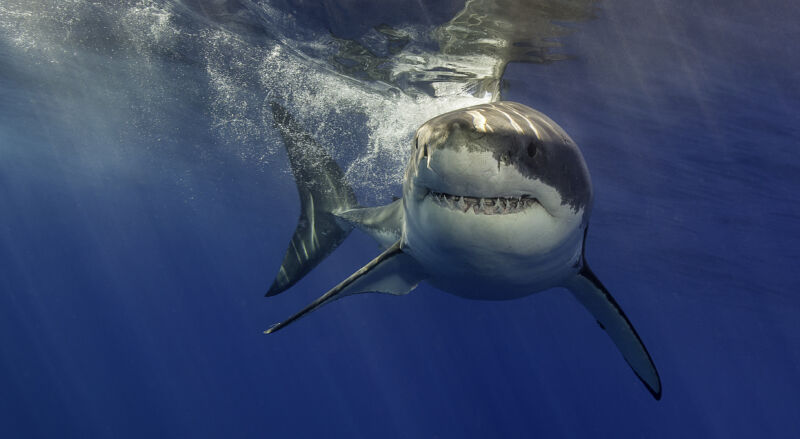
Enlarge / A great white shark. (credit: wildestanimal / Getty Images)
Gigantic extinct sharks have something to tell us from millions of years ago, and paleontologists are only just beginning to unravel that message. In a series of firsts, paleontologists have identified a growing number of paleo-nurseries, ancient sanctuaries where young sharks may have been born and where they grew until they were big enough to survive on their own in the larger sea. It’s a strategy some sharks continue to employ today, meaning it has been a successful evolutionary tactic for at least 23 million years.
The most abundant remnants we have of these apex predators are the teeth they shed over their lifetime. Cartilage, the major component of internal shark structure, doesn’t tend to survive fossilization. Given the considerable dearth of fossils, how can paleontologists ascertain the types and ages of extinct sharks? And how are paleontologists able to determine the site of a paleo-nursery from tens of millions of years ago in areas that are no longer underwater?
Answers with teeth
The answers lie with fossil teeth, from which paleontologists can determine species and estimate sizes—and, remarkably, the temperature and salinity of the water where the sharks lived. Although scientists aren’t yet able to establish the precise age of a shark from a fossil tooth, they can narrow it down to whether the shark was a neonate, juvenile, or adult, according to Matthew Gibson, the natural history curator at The Charleston Museum.
No comments:
Post a Comment